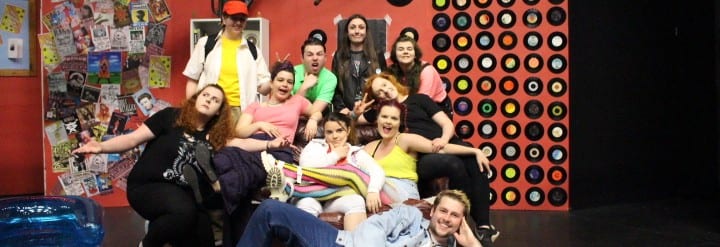Right now the script is in a rough draft form with quite a bit of work left to go into it. It is still very much a testing ground for what material works and what doesn’t, and there’s still plenty of work left to go into refining the dialogue and making both the humour and the drama better. During our last rehearsal/workshop our dramaturge Elif led us in the development of one of our characters actions and lines within scenes to expand on their arc and characterisation, which was very successful and a good example of the progress being made towards the next draft.
One of the benefits of the cast designing their own characters is that they each have an approach to their character’s speech patterns and dialogue that is easy to integrate into the script and create distinctions between each, as noted by Rib Davis: “Some characteristics of speech are specific to the individual, but others are the result of their place of origin, class, educations, and occupation” (2016, 12). Because our characters are so individualised there are plenty of opportunities for comedy to come from their language and identity, and during readings the actors will often alter a line to best fit their character, such as changing the wording of a joke, or even inserting comedy into a line that was previously not intended to be funny. There’s also a lot of improvisation going on which is immediately added if successful, and in some cases if an actor is unavailable for a rehearsal another will take their place and inject something new to the character that we then practice with the actual actor.
One of the biggest challenges at the moment is ensuring that the dialogue reflects the period. A particular example would be the use of slang terms, because each require research into their first usage and where. As we have both a chav character and an Australian character, I have had to research any particular term to find its origin, which is made harder by the era in which our piece is set. It’s also much harder researching terms used in the 90’s that are no longer in use and quite possibly will be meaningless to our audience. There have been instances where I have found terms and phrases that have separate meanings to what the audience would expect, and I have had to avoid them because they won’t be understood without unnecessary explanation. Likewise, some modern terminology that I didn’t think of was not present in the year of the play, and therefore also has to be removed. This is a problem with tackling the era in which we have set the play in general, as we have had to be mindful of what they had, what was going on, and what their lives would be like, whilst also being mindful of our audience and their own understanding.
Another prominent challenge has been how much exposition into the characters’ lives can be given. Because each character has a rich backstory thanks to the early writing sessions, it can be hard to judge how much we can give and when given the limitations in time we must operate under. Rib Davis states; “Some of the information could be omitted altogether, while other pieces might remain, but only because the characters are given credible motivation for mentioning them” (2016, 66). For one or two characters the backstory is a necessary part of expanding on their motivations and a tool for adding dramatic weight. In others their backstory could become another joke. An example of this would be Violet’s backstory, which is revealed through her outlook on life that is presented to the audience as a series of jokes.
“Good dialogue conveys conflict, attitudes, and intentions. Rather than telling about the character, it reveals character” (Linda Seger, 1990, 147)
Works Cited:
Davis, R. (2016) Writing Dialogue for Scripts. 4th Edition. London: Bloomsbury.
Seger, L. (1990) Creating Unforgettable Characters. New York: Henry Holt and Company, LLC.
